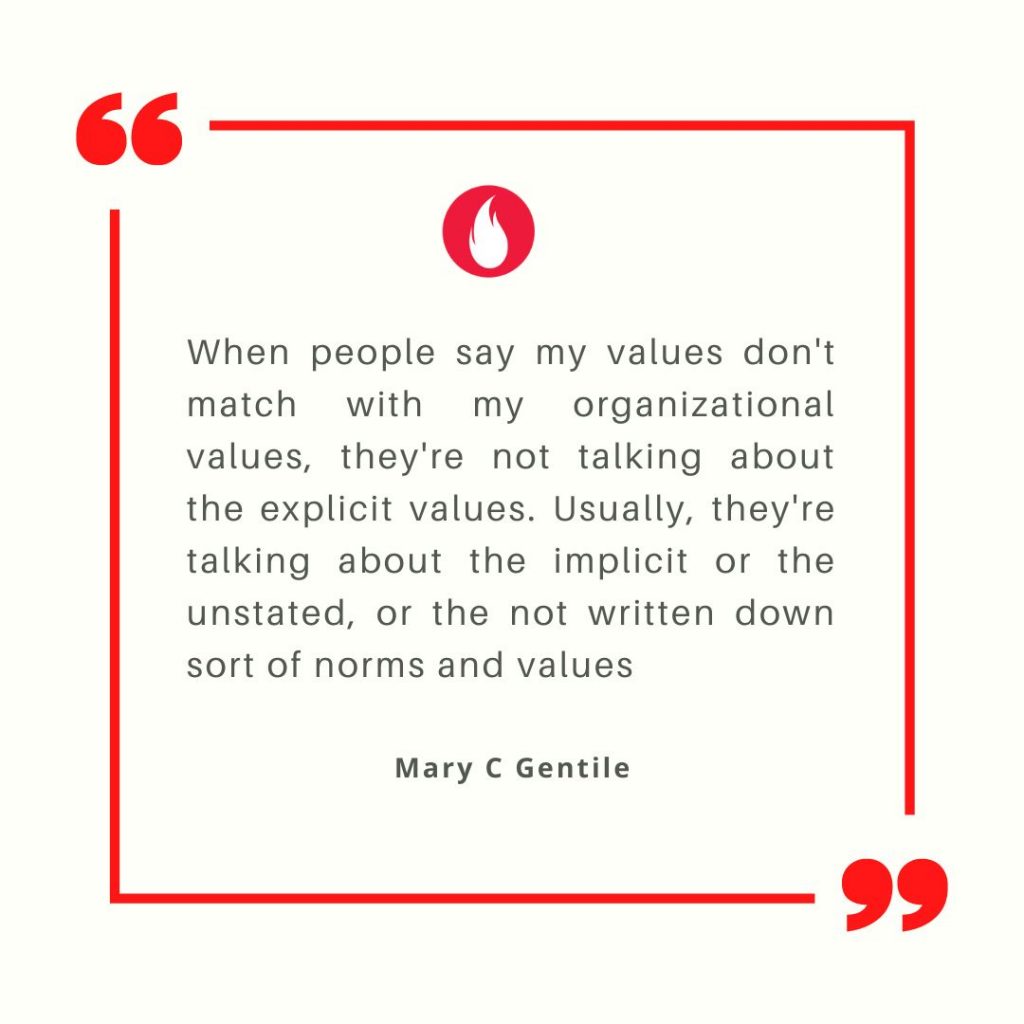World Values Day on 15th October saw hundreds of events held worldwide on the theme “Values in Action”. We brought together four thought leaders, Mary Gentile, Neil Hawkes, Peter Wiltshire and Kavi Arasu, to explore the challenges of “Bringing Values to Life in Organisations and Systems”. In this Blog post, the first in a series capturing the themes that emerged from the dialogue, we explore the dilemma of the values mismatch.
Values Mismatch
Whenever I hear someone talking about a “values mismatch”, the tone is often one of resign. That there is nothing to do about it. One of the reoccurring themes during the webinar was this mismatch between espoused values (posters on the walls, I write more about that here) and practice (behaviours).
Corporate values have the capacity to drive commitment and behaviour when there is values congruence. “A situation where the organizational values are in tune with the employees’ values”. Yet, values distortion, word-deed misalignment, seems to be more common than not.
Mary Gentile, Creator and Director of “Giving Voice to Values”, a pioneering and award-winning curriculum for values-driven leadership, with over 1,200 pilots globally, had this to say about this mismatch:
“If you look at most company codes of conduct or value statements, they’re going to be things that most of us agree with, because they’re things like, respect, integrity, fairness, you know, they’re things that we kind of, agree with. But when people say my values don’t match with my organizational values, they’re not talking about the explicit values. Usually, they’re talking about the implicit or the unstated, or the not written down sort of norms and values.

So things that actually feel like you’re asking me to do something that I don’t feel comfortable with, and it’s something that you wouldn’t even put on your wall, because it’s not something we’re that comfortable with. So, what we’re really talking about is, there’s a difference between espoused values and practice.”
Values Congruence
Yet there is not always a values congruence. What to do about it? Researchers at Alliance University, Bangalore, India conducted a study involving 149 employees across 130 companies representing different industries and found that “the value congruence depends on how an organization deploys its value system, practices behavioural integrity and closes the perceived gaps.”.
The authors of this study elaborate:
“Members attribute the values that characterize their organization through the patterns they observe in day-to-day actions. The bigger the variance amidst espoused values and enacted values, the bigger the probability for disappointment. The gaps between the values can be felt from organizational and managerial behaviors and has wide repercussions on critical progressions and performance in organizations. Hence Integrity is a decisive component in bringing the espoused values into practice.”
Closing The Gap
What else can we do to close the gap with this values mismatch? Mary had this to offer:
“The way to begin to address that, is to start having more conversations about the espoused values where you talk about them, as illustrated in practice. Share examples of how people act on the espoused values, the ones that everyone aspires to, so that those implicit messages end up being complicated, they end up not being the only message that counts. And people have an alternative narrative in their head and can actually begin to talk about it. So when people talk about my values don’t match my organizational values, it’s a little more complicated than the way it sounds.”
Reversing a “values mismatch’ is possible. We bring values to life in organisations through conversation. Values based conversations. In the next blogpost in this series we will examine “The Power of Stories in Bringing Values to Life”.




November 23, 2020, 1:53 pm
You are doing wonder work of addressing the issue which is more talked about but less followed. Time has come in India to aim to become great not just big.